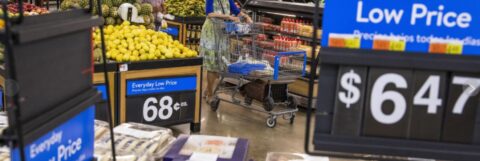Photo credit: Eduardo Munoz Alvarez, AP Photo
Associated Press
Oct. 10, 2024
Christopher Rugaber
Inflation in the United States dropped last month to its lowest point since it first began surging more than three years ago, adding to a spate of encouraging economic news in the closing weeks of the presidential race.
Consumer prices rose just 2.4% in September from a year earlier, down from 2.5% in August and the smallest annual rise since February 2021. Measured from month to month, prices increased 0.2% from August to September, the Labor Department reported Thursday, the same as in the previous month.
But excluding volatile food and energy costs, “core” prices, a gauge of underlying inflation, remained elevated in September, driven higher by rising costs for medical care and car insurance. Core prices in September were up 3.3% from a year earlier and 0.3% from August. Economists closely watch core prices, which typically provide a better hint of future inflation.
The improving inflation picture follows a mostly healthy jobs report released last week, which showed that hiring accelerated in September and that the unemployment rate dropped from 4.2% to 4.1%. The government has also reported that the economy expanded at a solid 3% annual rate in the April-June quarter. Growth likely continued at roughly that pace in the just-completed July-September quarter.
Cooling inflation, solid hiring and healthy growth could erode former President Donald Trump’s advantage on the economy in the presidential campaign as measured by public opinion polls. In some surveys, Vice President Kamala Harris has pulled even with Trump on the issue of who would best handle the economy, after Trump had decisively led President Joe Biden on the issue.
At the same time, most voters still give the economy relatively poor marks, mostly because of the cumulative rise in prices over the past three years.
For the Fed, last week’s much-stronger-than-expected jobs report fueled some concern that the economy might not be cooling enough to slow inflation sufficiently. The central bank reduced its key rate by an outsized half-point last month, its first rate cut of any size in four years. The Fed’s policymakers also signaled that they envisioned two additional quarter-point rate cuts in November and December.


